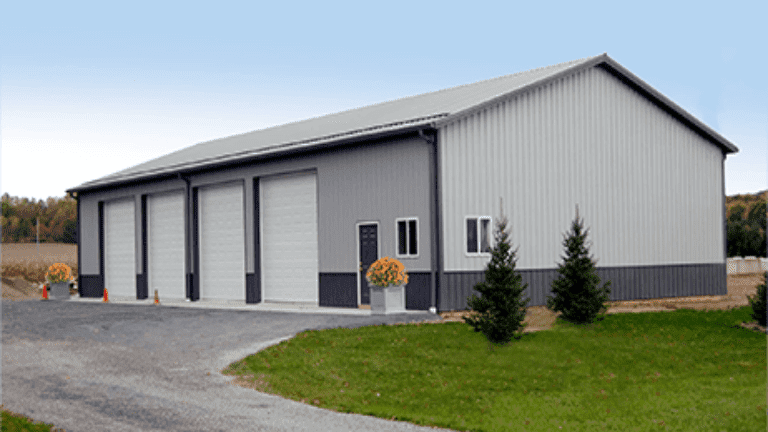The Competitive Advantage of Steel Structures: Why Choose This Superior Option
Steel buildings have emerged as a compelling option in the world of building for a wide range of reasons. The affordable edge that steel structures hold expands much beyond their first charm, making them a preferred choice for those seeking longevity and versatility in their construction tasks.
Resilience and Long Life
In the realm of building and construction, toughness and longevity are basic elements that underscore the value suggestion of steel buildings. Steel is renowned for its effectiveness and ability to stand up to numerous environmental problems, making it a suitable choice for durable structures. Unlike conventional materials like timber or concrete, steel does not warp, split, or rot in time, making certain that a steel structure remains structurally sound for years.
One vital factor adding to the durability of steel buildings is their resistance to bugs such as termites, which can create significant damages to wood frameworks. Steel is additionally non-combustible, decreasing the danger of fire damages and raising the safety of residents. Furthermore, steel buildings require very little maintenance compared to other building and construction materials, conserving both money and time in the future.
Moreover, improvements in steel production technology have even more improved the durability of steel structures by enhancing deterioration resistance and structural integrity. With proper care and upkeep, a sound steel structure can last more than half a century, providing a trusted and durable service for different building requirements.
Cost-Effectiveness
With its many financial advantages, steel as a building product offers an engaging affordable solution for different construction jobs. The cost-effectiveness of steel structures stems from several crucial factors.
Furthermore, the construction procedure with steel is much faster and more effective compared to various other materials, bring about reduced labor costs and earlier job conclusion. Steel buildings are also energy-efficient, enabling savings on cooling and heating expenses. The adaptability of steel permits simple development or alteration, minimizing future building and construction costs by eliminating the requirement for considerable remodellings. Generally, the cost-effectiveness of steel structures makes them a clever financial investment for different building and construction needs.
Versatility in Layout
The adaptability of steel as a building material enables a vast array of cutting-edge design possibilities in building and construction tasks. Steel structures use unparalleled versatility in layout, making them a favored option for home builders and architects. Among the crucial advantages of steel is its strength-to-weight ratio, which makes it possible for the building of large, open spaces without the requirement for excessive assistance columns. This architectural effectiveness permits creative and modern styles that may not be feasible with various other building products.
Steel's adaptability likewise permits for personalization to fulfill certain design needs. Whether it's curved roofings, intricate facades, or you can find out more one-of-a-kind geometric shapes, steel can be formed to bring practically any kind of design idea to life. In addition, steel structures can be easily broadened or changed, providing future versatility for adjusting to changing requirements.
Its toughness and resistance to deterioration make certain that steel structures keep their visual allure and click this link architectural honesty for years to come. Ultimately, the versatility of steel in design not just boosts the aesthetic allure of buildings but likewise contributes to their durability and functionality.

Lasting Building And Construction Practices
Building upon the structure of flexibility in layout, lasting building techniques in steel buildings play an important role in mitigating environmental influence and promoting lasting green options. Steel is a highly sustainable product due to its recyclability and longevity. When steel structures reach completion of their lifecycle, the steel components can be recycled and made use of in new building projects, reducing the need for raw products and reducing waste. Furthermore, the power efficiency of steel buildings adds to sustainability efforts. Steel frameworks can conveniently accommodate insulation, photovoltaic panels, and other energy-efficient attributes, minimizing power consumption and operational expenses with time. This not just benefits the setting but also supplies lasting cost savings for building owners.

Fast Construction Timeline

Additionally, the streamlined process of setting up steel structures reduces construction time considerably. The simplicity of steel structure style and the convenience of setting up contribute to faster project conclusion, making it an ideal selection for customers with time-sensitive demands (steel buildings). Furthermore, the capacity to function on different components simultaneously, such as website preparation and foundation building and construction along with steel fabrication, more accelerates the general construction timeline
Verdict
Finally, steel buildings supply a competitive advantage due to their resilience, cost-effectiveness, versatility in style, sustainable building and construction methods, and quick building and construction timeline. These variables make steel structures an exceptional alternative for different building projects, giving long-lasting benefits and worth. Choosing steel structures can lead to improved performance, effectiveness, and sustainability in the construction market.
Unlike traditional products like wood or concrete, steel does not warp, split, or rot over time, guaranteeing that a steel structure remains structurally sound for years.
The adaptability of steel as a building material permits for a broad array of ingenious layout opportunities in construction jobs.Structure upon the foundation of flexibility in style, lasting construction methods in steel structures play a vital duty in mitigating environmental effect and advertising long-lasting eco-friendly services. When steel structures get to the end of their lifecycle, the steel components can be recycled and used in brand-new building tasks, decreasing the demand for raw products and decreasing waste.In conclusion, steel buildings offer a competitive benefit due to their resilience, cost-effectiveness, flexibility in style, lasting building methods, and rapid construction timeline.